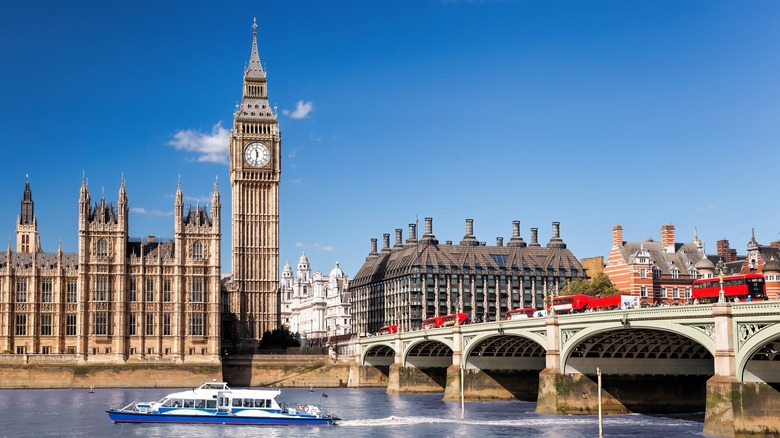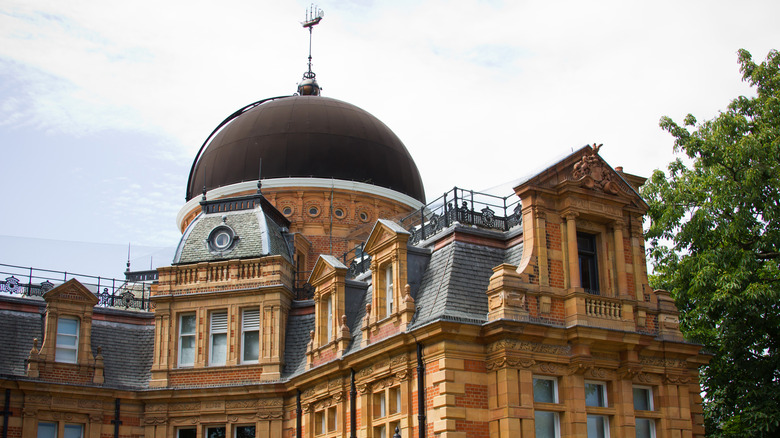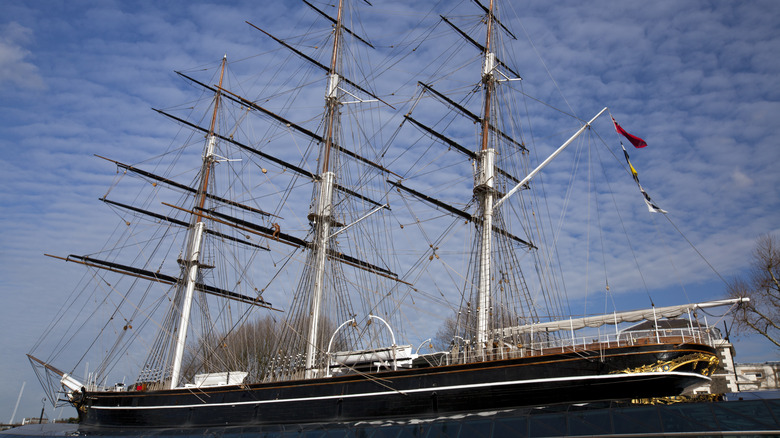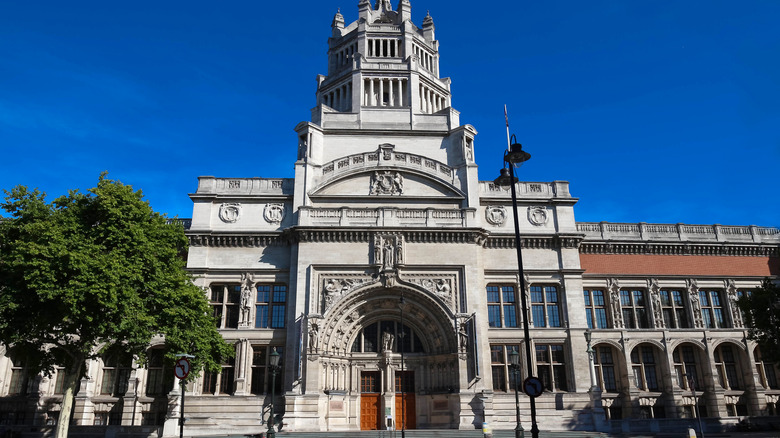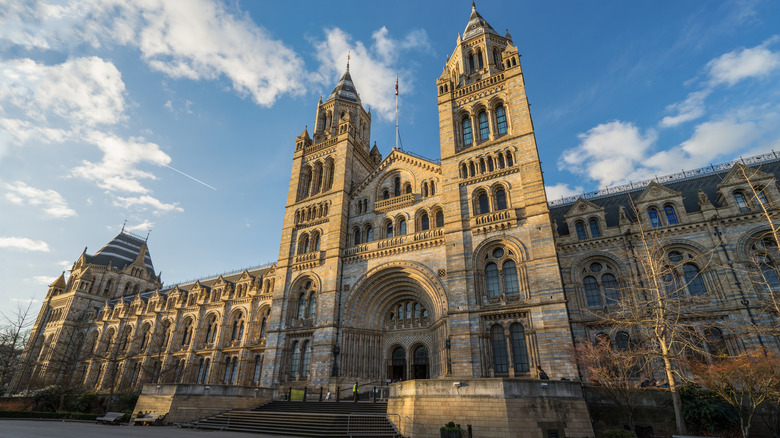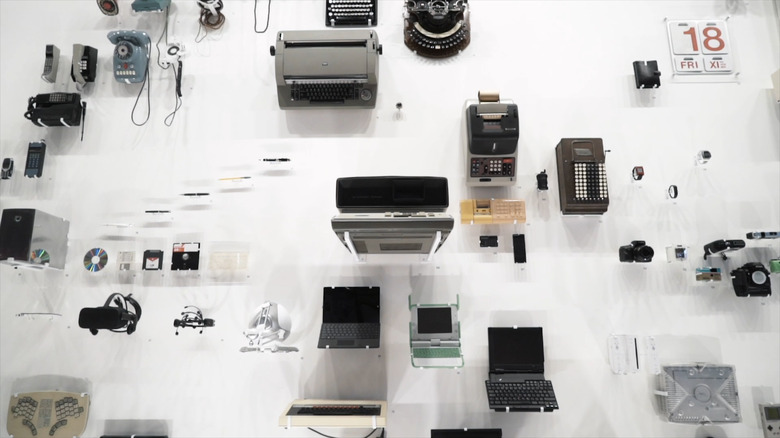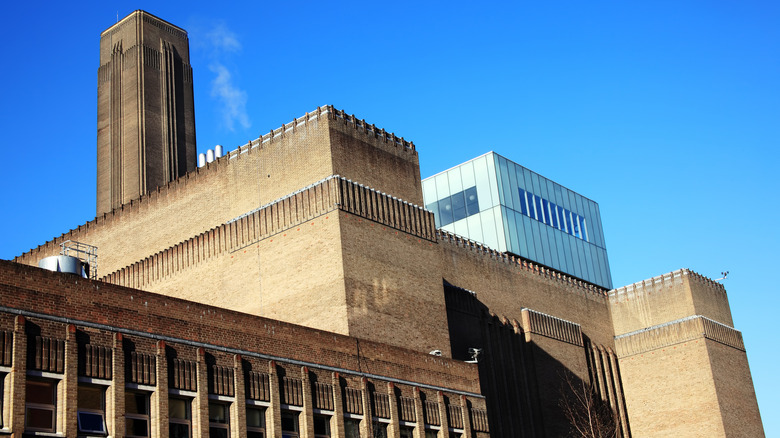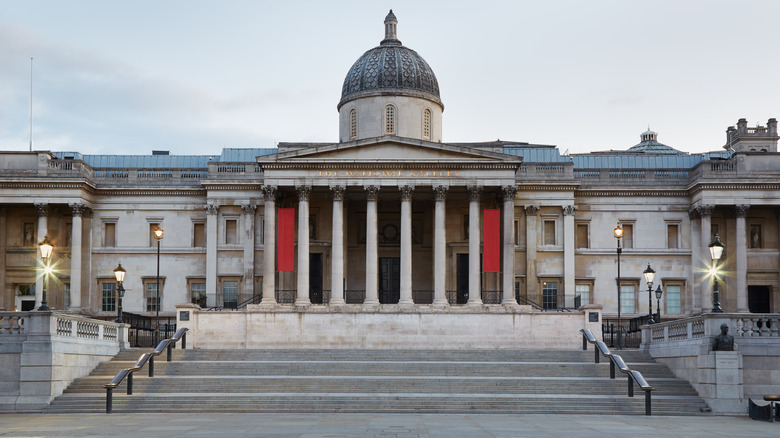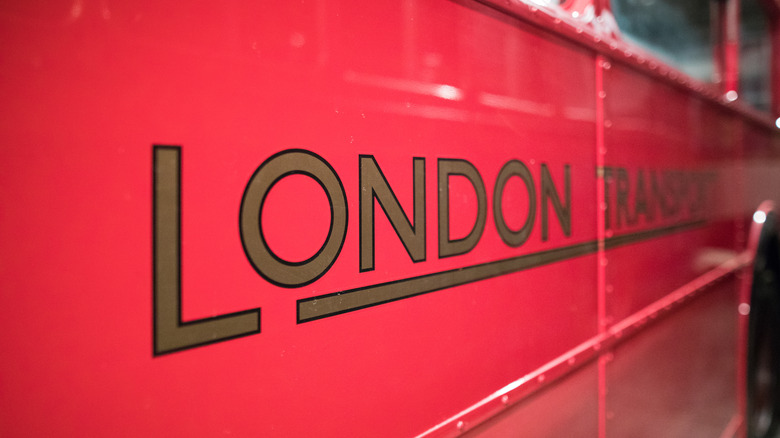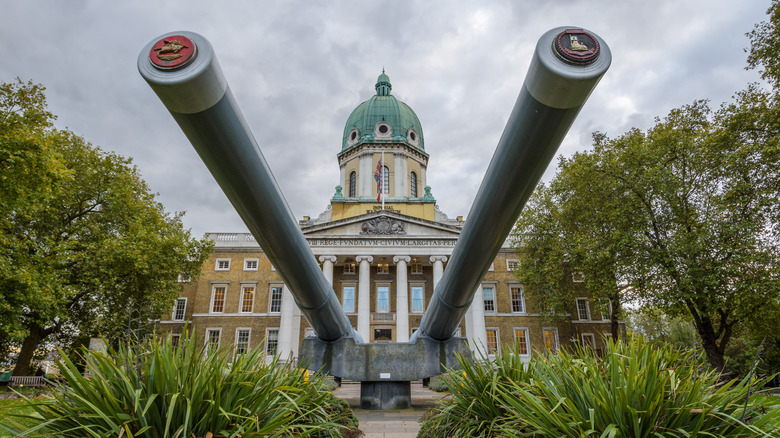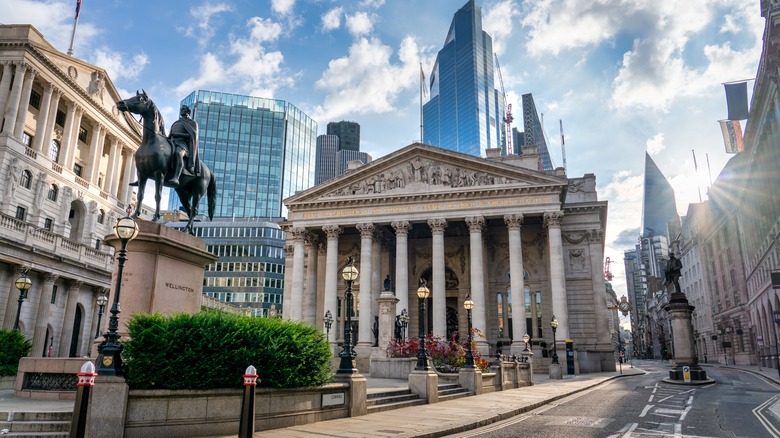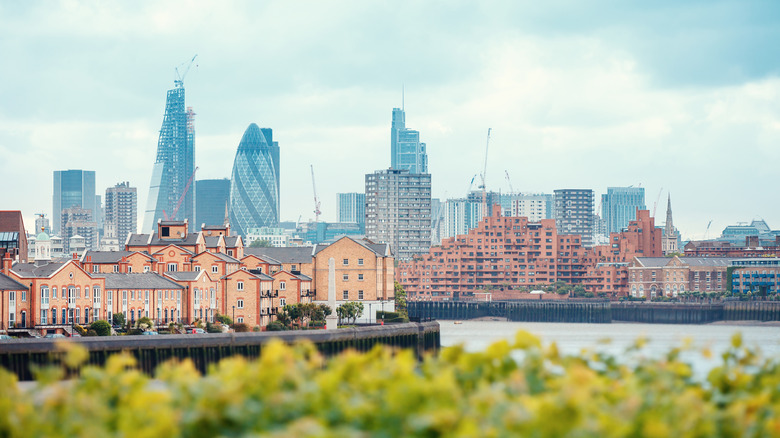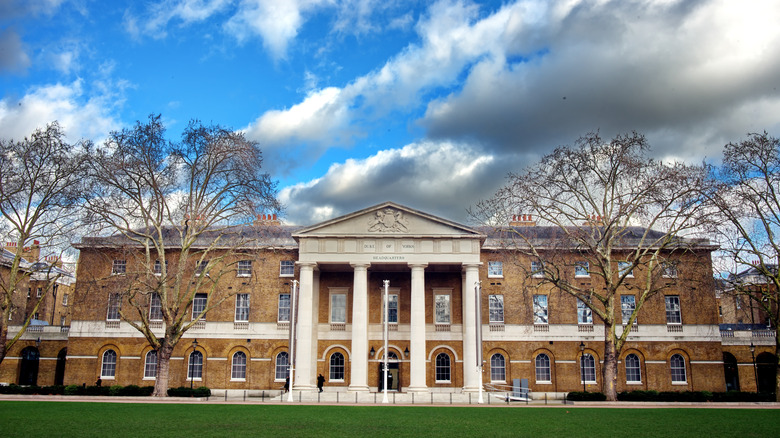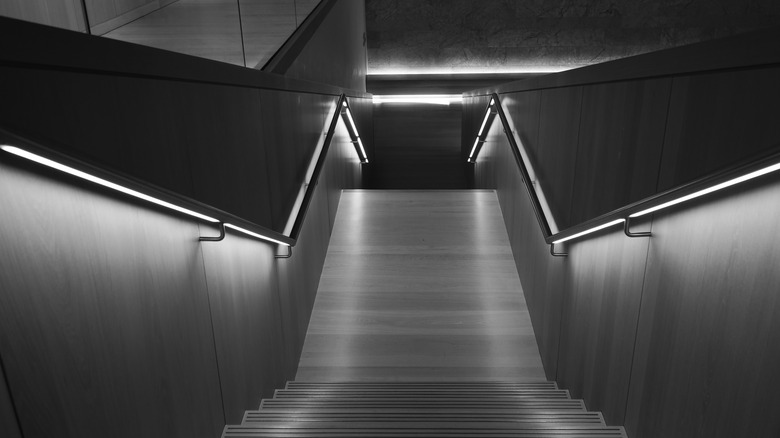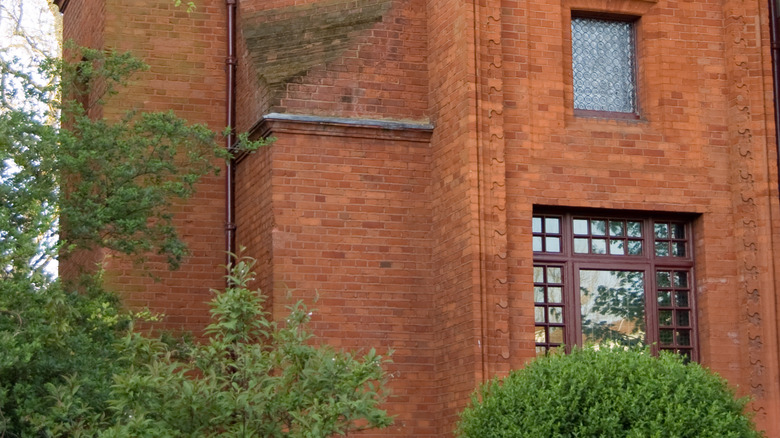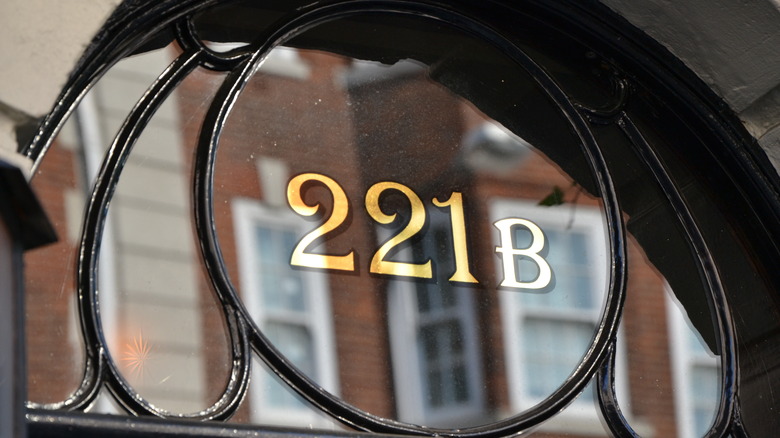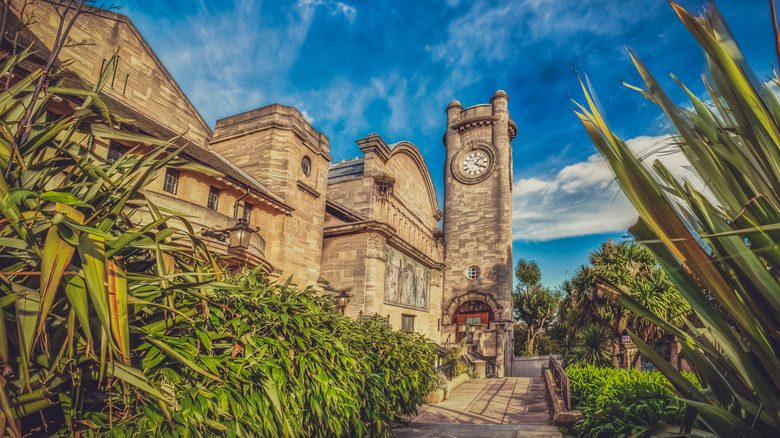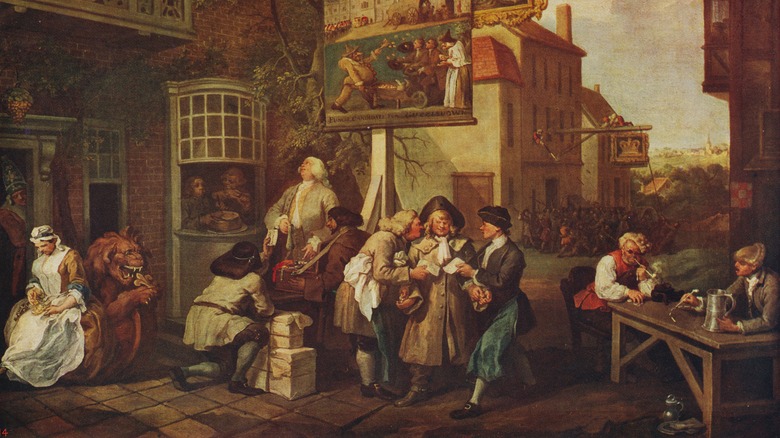The 18 Best Museums To Visit In London
The capital of the United Kingdom, this city of almost 9 million people has long lured travelers for its dizzying wealth of attractions. In London, you can admire iconic historic buildings, enjoy cuisine from all corners of the globe, shops at market large and intimate, new and old, and experience neighborhoods that are as richly varied as the people that live in them. To that list, add the huge trove of museums that visitors will find in the city, from those that are internationally renowned to more off-the-beaten-track gems that are just yearning to be discovered.
While the museum scene is constantly in a state of flux, affected by the sorts of closures and upgrades commonplace with any type of institution — the Pollock Toy Museum recently shuttered after 50 years in operation, the Museum of London will reopen in 2026 in a new space, and many closed temporarily during the COVID pandemic — there are still many to entertain, educate, and elicit whoops of delight from visitors of all ages. Below, we highlight ones to check out on your next trip to the city.
Royal Observatory
Time, when you think about it, can be a confusing concept to put into concrete terms, but at this destination in East London, time, for many years, was given its identity. Located in a neighborhood called Greenwich, the Royal Observatory is where Greenwich Mean Time (GMT) exists, for decades a benchmark for clocks around the world. Just as the Equator, at 0 degrees latitude, marks the central ring around the globe east-west, the Prime Meridian, or 0 degrees longitude, is the equivalent north-south.
Starting in the 1880s, GMT was used as the anchor that grounded the world's clock — times zones would frequently refer to themselves as GMT +/- a number of hours to signify how to calculate their time. In 1972, Coordinated Universal Time, or UTC, became the framework for global timekeeping, and GMT became just another time zone, not an abiding point of reference. GMT is still referred to in a number of countries, including the United Kingdom, underscoring its importance, and at the Royal Observatory, you can see actual GMT at the Shepherd Gate Clock.
Cutty Sark
Britain used its maritime fleet to great effect to expand its empire around the globe over a period of centuries, a testament to its strong seafaring tradition (not surprising, Great Britain is an island after all). That history is on display near the Royal Observatory at the Cutty Sark, a 150-year-old clipper with its original hull. Touring the ship provides visitors with a fascinating journey into the past, from walking on the wooden deck to having a go on a wheel that was used to steer the 960-ton vessel through seas near and far.
For travelers that want to up the excitement quotient, they can book a climb up the ship's rigging and mast, getting high above the River Thames for a grand view across London's urban sprawl. Nearby, the National Maritime Museum delves into marine traditions further, but this institution isn't just a look at the history of seafaring — guests can also see exhibits on things like the photography of astronomy and indigenous communities around the world.
V&A
If the name of this museum, located in the posh South Kensington part of London, seems a little baffling, it's because the initials stand for Victoria and Albert, the revered queen and her husband. Prince Albert founded this place in the 1850s, building on the success of the Great Exhibition in 1851 — the originator of what we now call the World Expo. If there is one museum most beloved by Londoners, it is definitely this one, perhaps because its scope and remit are so all-encompassing. Here you will be able to wander round shows on art, design, performance, and so much more.
To call the collection here diverse understates the breadth of subjects. You can peruse 2,000 pairs of shoes, from some hand-cobbled in Ancient Egypt more than 3,000 years ago to a see-sawing pair made more recently by the late architect Zaha Hadid. There are even exhibitions on tiles, wedding dresses, fashion, hats, digital art, wallpaper, opera, underwear, and cartoons by the Renaissance artist Raphael, and all that just scratches the surface of what this jewel box contains. The V&A has a number of satellite museums around the country, and some references will name this as the V&A South Kensington.
Natural History Museum
Located across Exhibition Road from the V&A, and close to a number of consulates, embassies, and high commissions, this museum is a treat for the entire family. As its name suggests, the multilayered past of the planet comes under the spotlight here, with exhibits that explore more than 4 billion years of the Earth's existence, housed in a building that's a landmark in itself. Some of the items here are truly special, displayed in a gallery called Treasures. These include a stuffed great auk (a bird that was hunted to extinction), a first edition of Charles Darwin's seminal study, "On the Origins of Species," a barbary lion skull, and a piece of moon rock, gifted to the United Kingdom by President Nixon.
For some visitors, the highlight is the hall filled with specimens stuffed into glass bottles and preserved in alcohol — octopus, snakes, sawfish, and scores of other creatures. A little less macabre are the dazzling cases with agate, the brightly colored minerals of tanzanite and morganite, the sections of rock that recount stories of the planet's past, and cross sections of giant sequoia trees. You could easily spend a full day here and not see everything.
Science Museum
Just behind the Natural History Museum, this is another place that appeals to kids — both big and small — who will relish the chance to discover the wonders of science. A hugely popular department is the Wonderlab, because it's a gallery that is interactive, with a chance to work in concert with staff who explain phenomena, see live demonstrations, and take part in scientific trials and shows. You might get to witness how lightning forms, appreciate the power of friction while riding a slide, or imagine what it's like to travel through space.
Other parts of the museum look at the incredible work done by engineers, the way mathematics has shaped the world, and even a gallery filled with aircraft (there's a simulator of the UK's famous Red Arrows, the Royal Air Force's aerobatic flight squad). A topical exhibition that runs until early 2024 looks at the speed and efficiency in making vaccines that were used to tackle the COVID pandemic.
Tate Modern
A rich vein of recent creativity — the past 100 years or so — as well as British art from the 1500s onward informs the collection of this repository where contemporary art dominates. Located on the south bank of the River Thames, and next to a replica of Shakespeare's Globe, the theater where the Bard of Avon staged a number of his plays, Tate Modern promises big, bold-faced names among the artists it exhibits, ones that are so famous that you only need to mention their last name for instant recognition. You'll see works by Picasso, Cézanne, Mondrian, and the like, alongside lesser-known artists.
You can cosy up to huge, woven-fiber pieces by Polish artisan Magdalena Abakanowicz that, when displayed together, create a sort of forest of fabric and color. Other shows looks at the cultural narratives of Africa through the mediums of photography, sound recordings, and video, and themes surrounding Australia's Aboriginal community.
National Gallery
The West End of London is usually high on the list of locations that tourists gather, with attractions like Leicester Square, Piccadilly Circus, Covent Garden, and the many theaters that stage nightly shows. It's also where to find Trafalgar Square, anchored by Nelson's Column, erected to commemorate the demise of Admiral Horatio Nelson at the Battle of Trafalgar. The square, a popular spot for crowds on New Year's Eve, is also home to the National Gallery, where European artwork is the primary focus.
Visitors will encounter some truly iconic pieces here, among them "Sunflowers" by Vincent Van Gogh, "Venus and Mars" by Sandro Botticelli, and "Bathers at Asnières" by Georges Seurat. Wandering the galleries, you'll find yourself transported through eras, with paintings that explore landscapes, intimate portraits of aristocrats, and snapshots of a moment in time. The building itself is as impressive as the collection here, the Portico Entrance defined by its high stone columns and stately domed roof.
London Transport Museum
The network that carries Londoners across the city is deep and far reaching, with a web of buses, commuter railways, and of course the London Underground allowing the residents, commuters, and visitors to efficiently, and cheaply, explore the city. A deep look at two centuries of transport in the capital is what this museum in the West End promises visitors.
There is so much detail that transit buffs, and even casual observers, will delight in here, from early drawings of the city's iconic, red double-decker buses, to the way that Londoners moved around the city in the 1800s (picture trams pulled by horses). Exhibitions also trace how London grew, from a series of villages to a large urban conglomeration, and how the transportation system responded to this growth. Be sure to visit the gift shop, where themed badge pins, cushions, and even lunch bags make great mementos and gifts.
Imperial War Museum
The idea of this institution was first aired during World War I, and it was housed in a number of locations before its current home in South London, not far from Westminster Bridge, Big Ben, and Westminster Abbey. The subject matter is self-explanatory — the study and effects of wars, both past and present, recounted both on a macro and micro level. The centerpiece of a visit would be the two floors of displays devoted to the Second World War — the most brutal conflict in the planet's history — and the Holocaust, with photos, books, individual items, and letters lending these devastating periods a deeply personal, intimate face.
Yet the museum isn't just a look into events of the past, with current hot topics very much mediums open for discussion. New shows analyze the way that video games relate to armed conflict, and photographs of life in Ukraine as war continues in the country.
Bank of England Museum
Money is money, but it's also an ever-evolving instrument, one that changes with the times, with the purpose that it serves, and with the relentless evolution of technology. The Bank of England has endured for centuries, and this museum, next door to the actual headquarters of the country's central bank, journeys back more than 1,000 years to look at the currency of money through archaeological finds, old banknotes and coins, pieces of art and sculpture, and commentary via social history.
The bank has printed banknotes since the 1600s, and a copy of every note produced is available here for visitors to see, as well as test drawings, and machinery and techniques used in their printing. There is even a section on counterfeiting. A current exhibition also looks at the central bank's connection to slavery, showing how the trafficking of Africans played a key role in the economic growth of Great Britain.
Museum of London Docklands
At their heyday, London's docks, in the city's east, were thriving hubs, with ships coming and going, supporting Britain's power as an empire. But these docks sustained significant damage during World War II, and slowly faded in importance, this part of the city gradually diminishing in economic heft. A huge redevelopment of the area started in the 1980s, and now the Docklands are again thriving, with towers of corporate offices, sleek housing, and plenty of shops and restaurants that pull in visitors from around the city.
At this museum, the permanent collections include one that explores the role of London's docks as a global trade nexus, with warehouses that sat along the riverside brimming with goods from all over the world. Shows also uncover many other aspects of the city, from the effects of centuries of public executions to how black entrepreneurs have helped to regenerate this part of London.
Saatchi Gallery
The name of this gallery refers to a high-flying advertising executive who privately amassed artworks (Saatchi & Saatchi continues to be a powerhouse in the advertising industry even today). Step into this space, in a posh part of southwest London, and what becomes apparent is that the artwork firmly focuses on the work of emerging artists. For some, Charles Saatchi is credited as being a driving force in the success of people like Damian Hirst and Tracey Emin, raw talents that are now bona-fide global stars.
Recent highlights include a richly varied assortment of photos, installations, and fashion items from artists who specialize in street art and graffiti. Artwork pulled from studios all over the United Kingdom is constantly displayed here, making the gallery an ever-changing conduit, where newcomers to the art world are able to showcase their creativity and drive. Visit now and you might just see works from the next big things.
Design Museum
It's hard to overstate how design touches all our lives — it's in everything from the screens we use to read stories like these to the shape of the shoes we wear as the tread around this planet, day in and day out. It's also responsible for the sweeping, swooping roof lines of this museum that probes the multifold ways that design all around us. Much like the restless ambition of design, exhibitions are constantly changing, evolving as the world and its whims move forward.
You might come here to see a show on how sounds and textures can help to create euphoria or calm, or how design is helping people to live with joy and comfort as they age, even as automation and climatic devastation threaten to change the face of life beyond anything we can imagine. The museum also hosts talks and workshops for visitors that want to explore the umbrella of design in more depth.
Leighton House Museum
Prepare for a visual treat. Together with Sambourne House, a few minutes' walk away, this former private house is a feast for the eyes, with both of them a short walk from the Design Museum. These beautifully appointed homes belonged to an artist and cartoonist, both of whom lived close to each other for a couple of decades. Frederic Lord Leighton was the president of the Royal Academy of Arts, and an established painter in his own right, while Edward Linley Sambourne drew cartoons for the humor magazine "Punch," a publication that still delights readers today.
The two were also ravenous collectors, and these homes show how voracious their appetites were, with displays of ceramics, sculptures, and items made of glass. Perhaps the most scintillating of the spaces are the Arab Hall and Narcissus Hall in Leighton's residence, the former notable for its grand pillars and ornate screens, the latter for the striking aquamarine tiles that blanket the walls.
Sherlock Holmes Museum
It's not often that fictional characters get their own museum, but Sir Arthur Conan Doyle's iconic sleuth does. Holmes is perhaps the most famous detective in the world — real or imagined — first debuting in the late 1800s, his escapades lovingly detailed through Doyle's floral prose. Today, Sherlock Holmes' name continues to be synonymous with watertight investigative work, even though the last Holmes novel was published more than a century ago. This museum is where he was purported to live, 221B Baker Street (as the plaque outside proudly proclaims), on the southern cusp of Regent's Park.
Entering the building recreates what characters in the book will have experienced, greeted by a member of Holmes' staff and shown into his study, where Victorian-era detailing and a trove of possessions from the book come to life. Elsewhere, you'll stumble on Watson's bedroom, the room where Holmes' landlady lived, and life-size wax figures of characters from the various books in the series. A trip here is truly transportive, it really is like walking into the past.
Horniman Museum & Gardens
The South Circular Road is an arterial band that links parts of southern London, though for many Londoners it's a traffic-choked nightmare best avoided during the rush hours (or any time, come to think of it). Just north of this main road sits this destination that doesn't neatly fall under any traditional description. It's a museum in name, yes, but there is so much variety here that an eclectic exhibition space might be a more apt label.
You might find galleries where giant dinosaurs made from LEGOS stand sentry, an aquarium where reefs from Fiji dazzle through thick panes of glass, and a selection of archival photos of African archeologists. The World Gallery presents a cornucopia of global riches, like metalwork from the Sahara, herbs from Bhutan, and a tree where colorful labels from visitors are hung, each inscribed with a handwritten message. As enjoyable are the 16 acres of gardens, including one populated with bees.
Sir John Soane's Museum
This museum is named for the man who made his name as a leading British architect, and who also renovated three buildings in The City of London (the square mile that is home to many financial institutions) that now house this place. The site is amply filled with Soane's immense collection of antiquities, a trove of items purchased by an inveterate collector. There is so much to sift through here, antiques, drawings, sculptures, books, furniture, and paintings by the likes of English master J.M.W. Turner, hung in the Picture Room where almost every scrap of wall space is taken up by a masterly canvas.
In the Model Room, you can marvel at model of the excavations at Pompeii, or the Greek Temples of Paestum, all made of cork. For something even more rare, stop by the room that is home to the sarcophagus of Egyptian pharaoh Seti I, who died in 1279 B.C.
